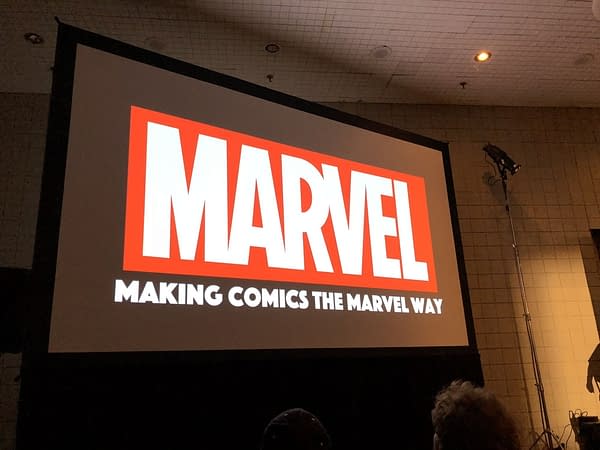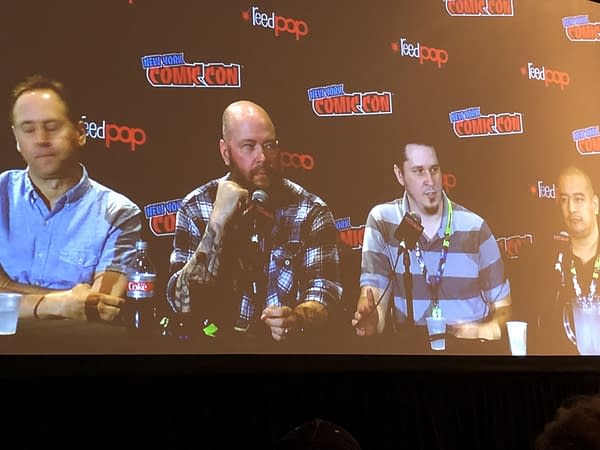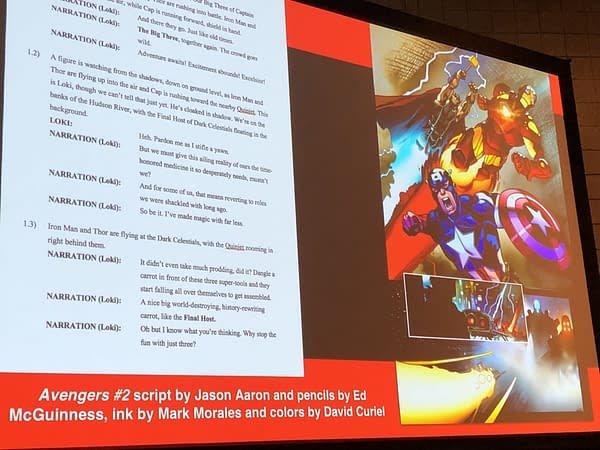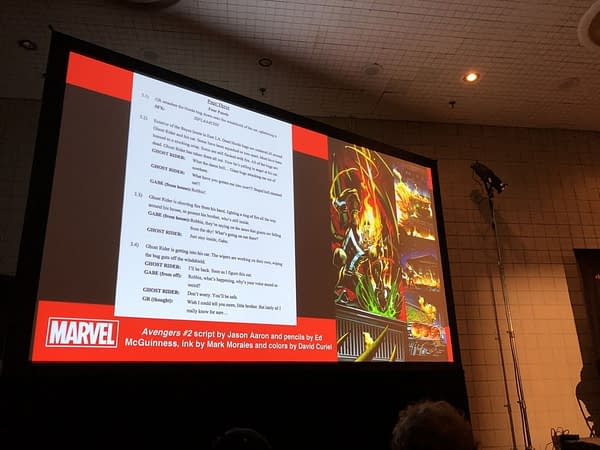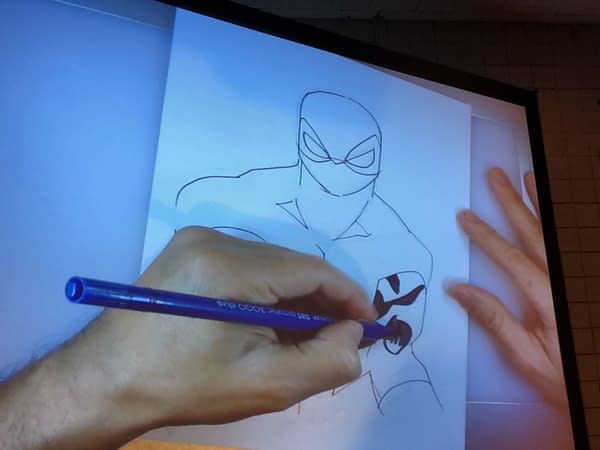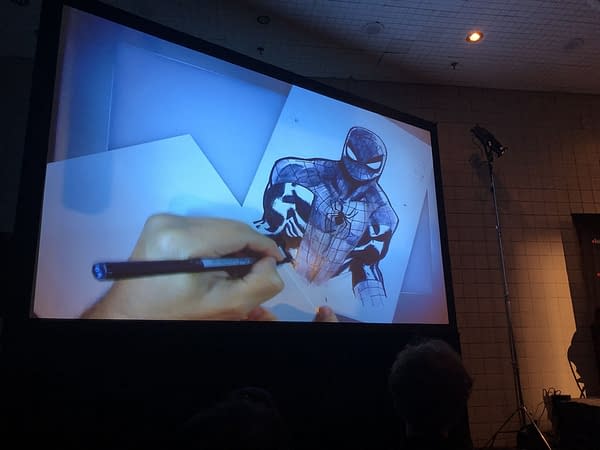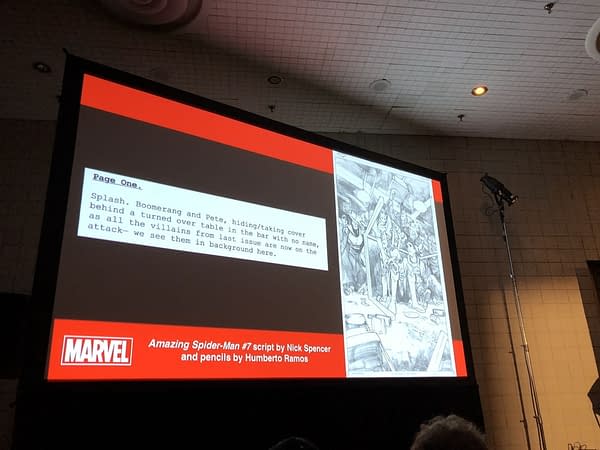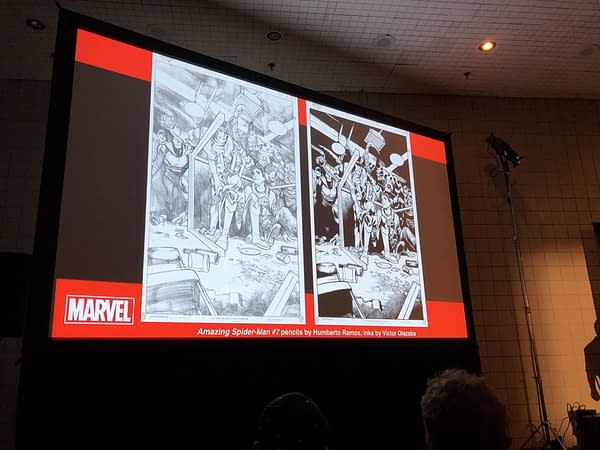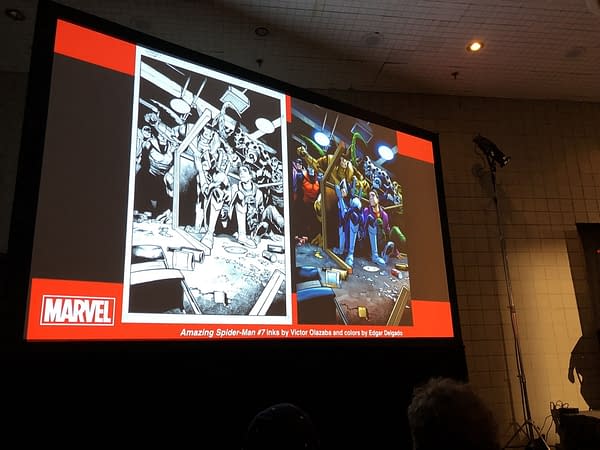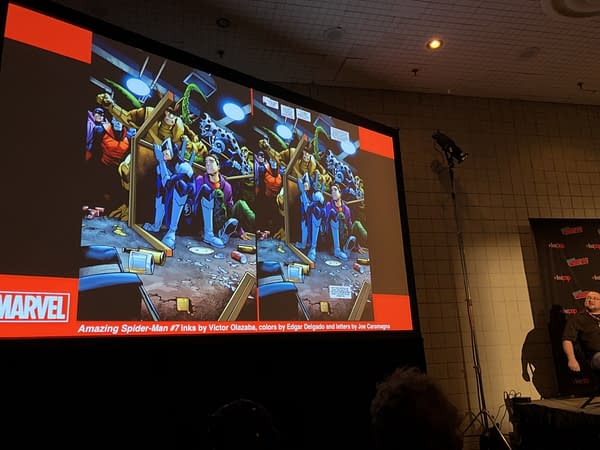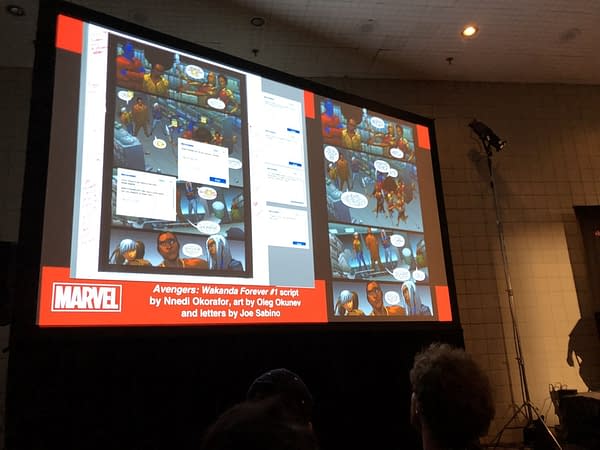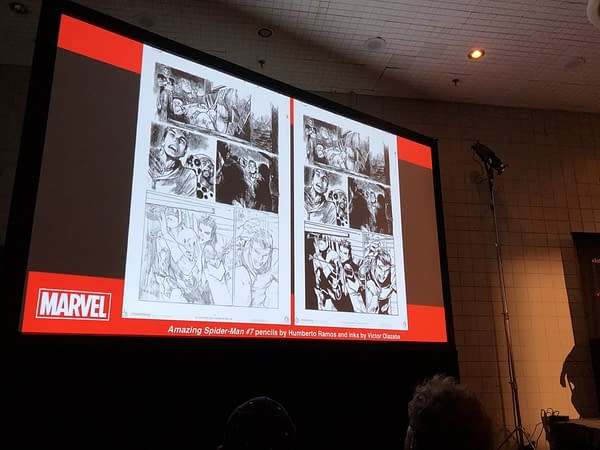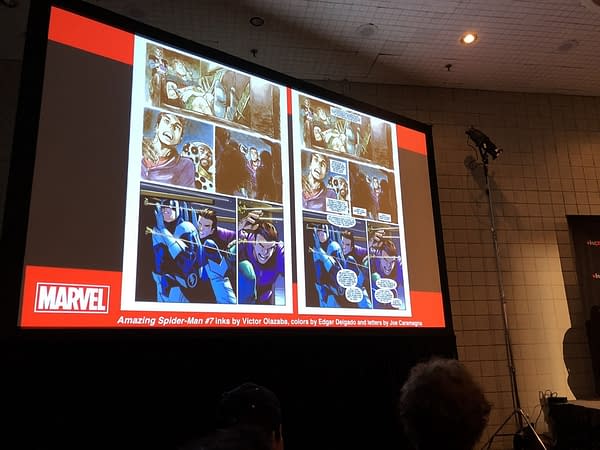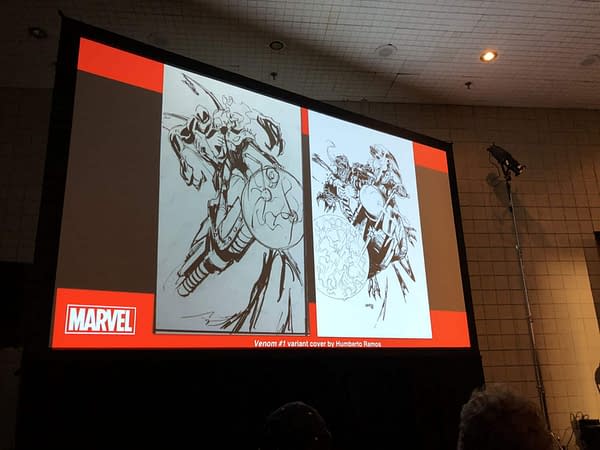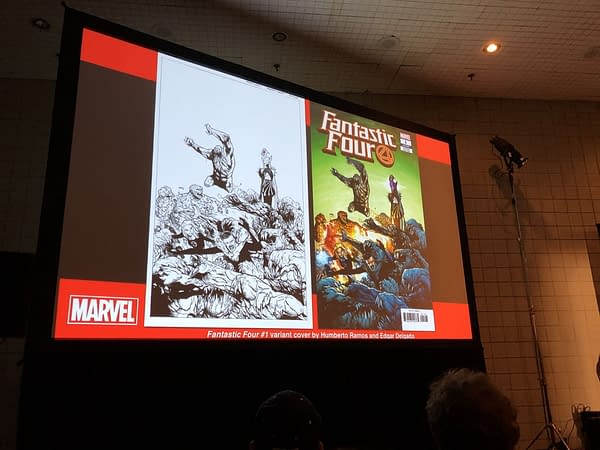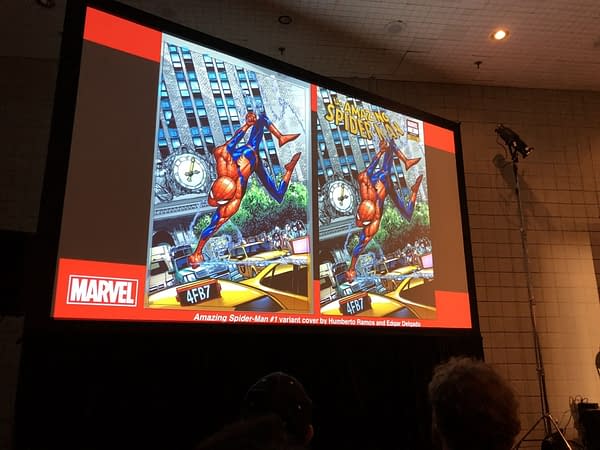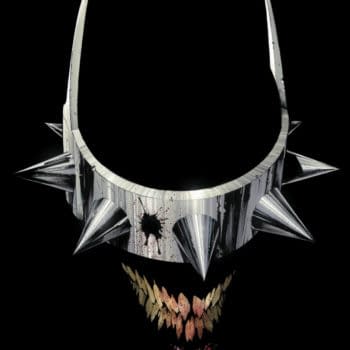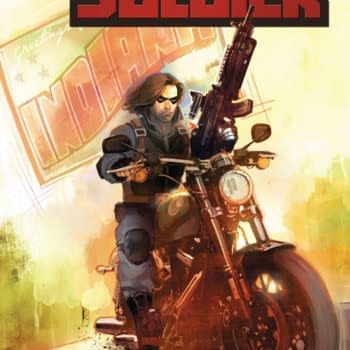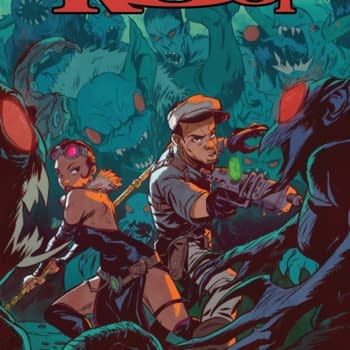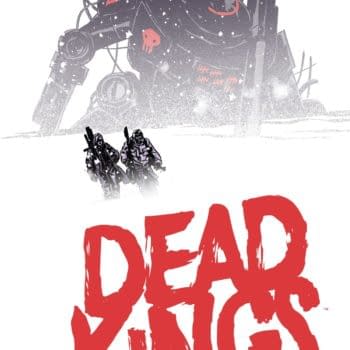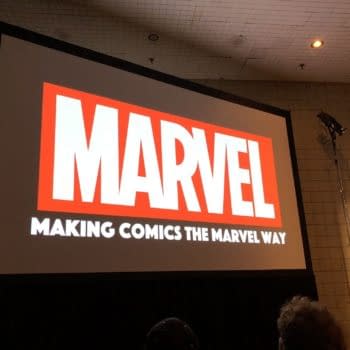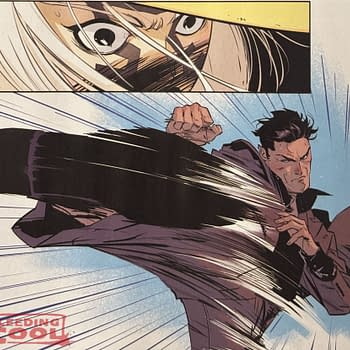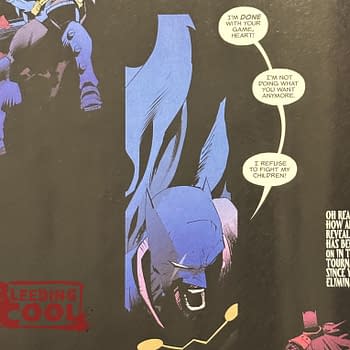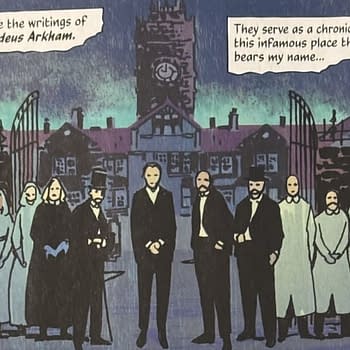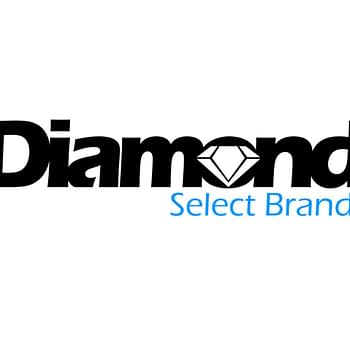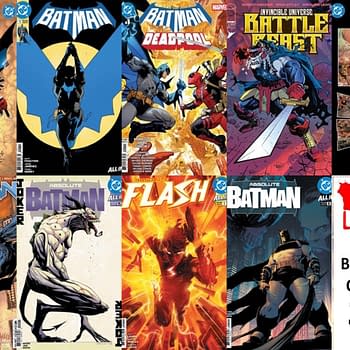Posted in: Comics | Tagged: marvel, new york comic con, NYCC
Jason Aaron, Ed McGuinness, Humberto Ramos and CB Cebulski Explain How Marvel Make Comics at NYCC 2018
Ace Reporter Hugh Sheridan reports from NYCC for Bleeding Cool:
Marvel's manager of talent relations Rickey Purdin hosted the "Making Comics the Marvel Way" panel at NYCC which tried to show the nuts and bolts of how a Marvel comic book gets made.
To illustrate this Marvel's Editor-in-Chief CB Cebulski was joined by a collection of different types of comic creators, from writer Jason Aaron (Thor, Avengers, Southern Bastards), pencillers Ed McGuinness (Avengers, Batman Superman) and Humberto Ramos (Amazing Spider-Man), inker Victor Olazaba (Spawn, Champions), colourist Edgar Delgado (Infinity Wars, Venom) and letterer Chris Eliopoulos (Savage Dragon, Amazing Spider-Man).
Purdin chose to start at the very beginnings of the process – the pitch – and asked Aaron about the process while putting up on the screen a sample page from a Jason Aaron script. Aaron took a second to respond "sorry I was distracted reading my own script!".
He said he "hates pitching" it is "really hard to write a pitch – you should put all the good stuff in – don't bother teasing" and instead just show your best stuff up front.
Aaron then talked about scripting – he tends to write screenplay style – like the sample in the slide – where you break down what happens in each panel for the artist to interpret. But he explained that the style of script can depend on the artist – Chris Bachalo would break down the panels himself – "I wouldn't ask him to do those 15 panel grids he does".
CB explained what "Marvel style" scripts mean – Stan Lee didn't have time to write detailed scripts as he was writing the entire line, so he would write a few paragraphs explaining what needed to happen in each issue and the artist would figure it out. These days though "95% of work is done screenplay style" like the samples of Aaron's script shown in the slide.
The focus then moved to the art and McGuinness (who sketched a pic of Spider-Man throughout the panel) said his first step is to figure out "how much time do I actually have" to complete an issue – "5-6 weeks would be great" per issue – but it's usually less as they are often "running late". He thumbnails out the entire book and "looks at where we need to spend our money" – the parts of the script where big action scenes or crucial plot developments happen and then tends to concentrate his energy in figuring out how to stage those bits.
With that Purdin showed a splash page from the upcoming Amazing Spider-Man #7 penciled by Humberto Ramos. Ramos explained that his focus was on the characters and the scene has lots – it involves the "Bar With No Name" where grade z super-villains hang out in the Marvel Universe and has "6-8 characters in each panel" – which involves "lots of work and lots of research – thanks Nick!" (Nick Spencer is the title's writer).
Olazaba then talked about the inking process. He gets the original art from Ramos via fedex. He then looks at it for a ½ hour – looking at the character's expressions – each one has a different feeling – he inks the faces of the main characters at very end after all the other work – "that way I'm warned up and give more depth to each detail".
Delgado talked about the coloring process – he focuses on the lighting first – in the sample Purdin put up it is obvious from visible indoor lights in the panel. He said that on that page he tried to emphasize the blue in the main characters – "blue 'cos it's kind of sad – they are all sad because they are about to be beat up!" He gets the files through Marvel's server. He then sends the finished jpeg to editor, writer and artist and gets feedback.
Finally Eliopoulos talked about the lettering "we are the ass end of process" he said. This is a new development – "we used to be between the penciller and inker" and they worked on the original boards "now it's all digital''.
He talked about how the lettering and balloon placement is vital because it sets up how the reader moves their "eye around page". These days the letterer "does the balloon placing ourselves" which used to be the editors job. Some artists – like Chris Bachalo – set up the balloons themselves on the art.
After the letterers first pass there is an extra new step now where they then gets notes back from the writer who often fine tunes the script to suit the art. Eliopoulos said that Aaron is one of the better ones – "he doesn't change much"
Purdin put up another page from Amazing Spider-Man #7 which features a flashback scene. Ramos then talked about his approach to depicting them – flashbacks used to be denoted by curved panels and though that's fallen out of fashion he likes to give them a different texture to let people know it is something different – so he penciled those panels in ball point. He also thinks it "shows people that hate me that I can actually draw". Delgado said he loves these bits especially because it drastically reduces his work – "I just have to do a bit of spot coloring then call it a day".
Cebulski then talked about the importance of covers – how they initially function to show the retailer and fans what is going on in the book that month in the Diamond catalogue and need to be a striking image that catches attention. There are a "million ways to be striking" but Joe Quesada always says that "white is the best background – it makes images "jump off the page".
McGuinness talked about how he came up with his covers – it's a "melting pot of ideas" he often gets suggestions from Aaron or his editor Tom Brevoort – and he always tries to come up with "something that is intriguing"
An image of a Venom cover appeared on the screen and Eliopoulos noted that he created the Venom logo over 20 years ago – "I want my royalties or something!"
Then there were a few questions from the audience – a fan asked about what happens if there is a disagreement between creators?
Aaron said that he finds these rare "the cool thing is that it's a collaboration – if the artist has a better idea of how to tell the story that's cool – that's the fun part of it"
But "If you disagree it's the editor's job to mediate"
McGuinness said that Aaron is "very gracious and giving about that" in their work together
There was a question about breaking in and Purdin answered that its easier for artists – they should do up portfolios and contact editors. A good method of figuring out what editors to send them to is to look up the names of who edits your favorite books and reach out to them with samples – the indicia of every comic gives the address of the company
For writers Aaron says "you should never underestimate value of sending in actual comics". Cebulski agreed said showing you can write is not just about showing you have ideas, but showing people you can do it –" find an artist and make the comic – it shows you have the passion, drive and desire to make it work in the business".
Marvel is – "always looking for new talent, especially writing talent" and people have gotten started in lots of different ways but Cebulski said "breaking in to comics is like breaking out of jail – once someone finds a way in everyone else has to find new way."


